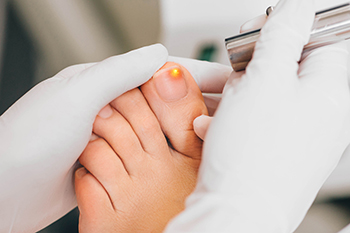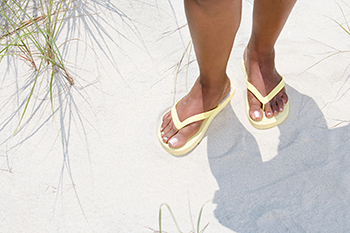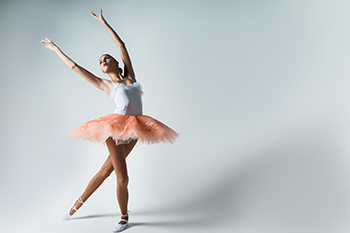Items filtered by date: October 2023
Exploring Surgery Options for Ankle Arthritis

Ankle arthritis, characterized by the progressive degeneration of the ankle joint, can cause significant pain and hinder one's ability to move comfortably. When conservative treatments such as medication and bracing prove insufficient, surgery for ankle arthritis may become a viable option. There are several surgical procedures available to address ankle arthritis, each tailored to the individual's specific condition and needs. One common procedure is ankle arthroscopy, a minimally invasive technique that allows the surgeon to examine and treat the joint with small incisions. Ankle fusion, or arthrodesis, involves the removal of damaged joint surfaces and the fusion of the tibia and talus bones to create a stable but immobile joint, effectively eliminating pain. Ankle replacement surgery, or arthroplasty, is another option, where the damaged joint is replaced with a prosthetic implant, preserving joint motion and relieving pain. The choice of surgery depends on factors like the extent of joint damage, the patient's age, and overall health. While each surgery comes with its own set of considerations and potential risks, these options offer hope for improved ankle function and long-term pain relief for individuals battling ankle arthritis. If you have ankle arthritis and are contemplating surgery as a treatment option, it is strongly suggested that you consult a podiatrist who can determine the best type of surgery for you.
Foot surgery is sometimes necessary to treat a foot ailment. To learn more, contact Dr. Ronald Sheppard of Warren-Watchung Podiatry Center. Our doctor will assist you with all of your foot and ankle needs.
When Is Surgery Necessary?
Foot and ankle surgery is generally reserved for cases in which less invasive, conservative procedures have failed to alleviate the problem. Some of the cases in which surgery may be necessary include:
- Removing foot deformities like bunions and bone spurs
- Severe arthritis that has caused bone issues
- Cosmetic reconstruction
What Types of Surgery Are There?
The type of surgery you receive will depend on the nature of the problem you have. Some of the possible surgeries include:
- Bunionectomy for painful bunions
- Surgical fusion for realignment of bones
- Neuropathy decompression surgery to treat nerve damage
Benefits of Surgery
Although surgery is usually a last resort, it can provide more complete pain relief compared to non-surgical methods and may allow you to finally resume full activity.
Surgical techniques have also become increasingly sophisticated. Techniques like endoscopic surgery allow for smaller incisions and faster recovery times.
If you have any questions please feel free to contact one of our offices located in Marlboro and Watchung, NJ . We offer the newest diagnostic and treatment technologies for all your foot and ankle needs.
Foot Deformities in Newborns

The most common deformities in newborns are metatarsus adductus and calcaneovalgus, both of which typically resolve without long-term complications. Metatarsus adductus involves a curve in the middle of the baby's foot, causing it to fold inward. The key question is whether the foot is flexible and can be gently straightened. In most cases, flexible metatarsus adductus corrects itself by 6 to 12 months of age. Clubfoot is also recognizable by a stiff foot with a high arch. It can occur in one or both feet and may be detected before birth via prenatal ultrasound. The Ponseti method, involving casting, Achilles tenotomy, and bracing, is highly effective if initiated within the first few weeks after birth. Congenital vertical talus results in an upward and outward bend in the foot, similar to clubfoot. It's typically stiff and uncorrectable, requiring surgery and casting. Calcaneovalgus presents as the opposite of metatarsus adductus, with the foot pushed upward and outward. This condition often resolves naturally within a few months. Surgery is rare, except when there's significant shin bone bowing. If you have concerns about your newborn's foot alignment, it is suggested that you consult a podiatrist for expert guidance and appropriate care.
Congenital foot problems require immediate attention to avoid future complications. If you have any concerns, contact Dr. Ronald Sheppard of Warren-Watchung Podiatry Center. Our doctor can provide the care you need to keep you pain-free and on your feet.
Congenital foot problems are deformities affecting the feet, toes, and/or ankles that children are born with. Some of these conditions have a genetic cause while others just happen. Some specific foot ailments that children may be born with include clubfeet, polydactyly/macrodactyly, and cleft foot. There are several other foot anomalies that can occur congenitally. What all of these conditions have in common is that a child may experience difficulty walking or performing everyday activities, as well as trouble finding footwear that fits their foot deformity. Some of these conditions are more serious than others. Consulting with a podiatrist as early as possible will help in properly diagnosing a child’s foot condition while getting the necessary treatment underway.
What are Causes of Congenital Foot Problem?
A congenital foot problem is one that happens to a child at birth. These conditions can be caused by a genetic predisposition, developmental or positional abnormalities during gestation, or with no known cause.
What are Symptoms of Congenital Foot Problems?
Symptoms vary by the congenital condition. Symptoms may consist of the following:
- Clubfoot, where tendons are shortened, bones are shaped differently, and the Achilles tendon is tight, causing the foot to point in and down. It is also possible for the soles of the feet to face each other.
- Polydactyly, which usually consists of a nubbin or small lump of tissue without a bone, a toe that is partially formed but has no joints, or an extra toe.
- Vertical talus, where the talus bone forms in the wrong position causing other bones in the foot to line up improperly, the front of the foot to point up, and the bottom of the foot to stiffen, with no arch, and to curve out.
- Tarsal coalition, when there is an abnormal connection of two or more bones in the foot leading to severe, rigid flatfoot.
- Cleft foot, where there are missing toes, a V-shaped cleft, and other anatomical differences.
- Macrodactyly, when the toes are abnormally large due to overgrowth of the underlying bone or soft tissue.
Treatment and Prevention
While there is nothing one can do to prevent congenital foot problems, raising awareness and receiving neonatal screenings are important. Early detection by taking your child to a podiatrist leads to the best outcome possible.
If you have any questions please feel free to contact one of our offices located in Marlboro and Watchung, NJ . We offer the newest diagnostic tools and technology to treat your foot and ankle needs.
Laser Therapy and Toenail Fungus

Toenail fungus, or onychomycosis, can be stubborn and challenging to treat with traditional methods. However, recent advancements in medical technology have introduced an effective alternative, which is known as laser therapy. This innovative approach utilizes concentrated beams of light to target and eliminate the fungus residing beneath the toenail. The laser treatment process begins with the application of the laser, which penetrates the nail. This specifically targets the fungal infection while leaving the surrounding healthy tissue unharmed. The laser generates heat, effectively eradicating the fungal cells and inhibiting their ability to regrow. Laser treatment offers several advantages. It is non-invasive, requires no anesthesia, and typically involves minimal discomfort. Additionally, it can be extremely effective, often requiring fewer sessions than traditional treatments. Patients can generally resume their daily activities immediately following the procedure. As with any medical treatment, consultation with a podiatrist is crucial in determining what the best approach is for your specific condition. Laser therapy represents a promising option in the battle against stubborn toenail fungus, offering a safe, efficient, and minimally disruptive solution to restore healthy and clear nails. If you are afflicted with toenail fungus, it is suggested that you seek the counsel of a podiatrist who can determine if laser treatment is right for you.
Laser treatment can be an effective way to get rid of toenail fungus. If you have any questions about laser treatment, consult with Dr. Ronald Sheppard from Warren-Watchung Podiatry Center. Our doctor will assess your condition and provide you with quality treatment for fungal nails.
What Are Toenail Fungal Infections?
Onychomycosis, or fungal infection of the nail, is a relatively common and non-serious condition. Around 10 percent of U.S. citizens are afflicted with fungal nails. Common forms of fungus that infect the nail include dermatophytes, yeasts, and molds.
Symptoms of Toenail Fungal Infections Include:
- Nail thickening
- Brittleness of the nail
- Discoloration of the nail
Diagnosis for Fungal Nails
Fungal infections are diagnosed by fungal culture and microscopy. This will rule out any other conditions such as nail trauma, psoriasis, lichen planus, and onychogryphosis.
What Is Laser Treatment?
Laser treatment is a non-invasive, safe, quick, and painless procedure that uses the heat from a laser to kill fungus in the nail. Each infected nail is targeted with a laser for several minutes. The treatment is usually utilized several different times over a select period. During this time, a podiatrist will keep an eye on the infection.
If you have any questions, please feel free to contact one of our offices located in Marlboro and Watchung, NJ . We offer the newest diagnostic and treatment technologies for all your foot care needs.
Arthritis Can Cause Pain in the Feet and Ankles
Alternatives to Flip-Flops

If you are a fan of flip-flops, it is essential to consider their impact on foot health. While these airy sandals are convenient, they may not be the best choice of footwear because they offer minimal arch support, heel cushioning, and shock absorption, possibly leading to foot discomfort and pain. Wearing flip-flops forces your toes to grip tightly to keep the sandals on. Over time, this can lead to conditions such as hammertoe, where toes become permanently bent. Researchers have found that flip-flops can change your natural walking pattern, potentially causing pain and problems from your feet up to your hips and lower back. The majority of flip-flops have thin soles that offer little foot protection. This can result in increased heel-strike impact and foot discomfort. Flip-flops can also increase the risk of falls and injuries due to their minimal attachment to the feet. Substitutes for flip-flops that are better for your feet should fit snugly without being too tight, provide proper arch and heel support, and have ankle straps or toe rests to prevent slipping. In general, flat-soled shoes are not ideal for foot health. If you desire the comfort and ease of flip-flops but want to protect your feet, it is suggested that you make an appointment with a podiatrist for recommendations
Flip-flops can cause a lot of problems for your feet. If you have any concerns about your feet or ankles, contact Dr. Ronald Sheppard from Warren-Watchung Podiatry Center. Our doctor will assist you with all of your foot and ankle needs.
Flip-Flops and Feet
Flip-flops have managed to become a summer essential for a lot of people. While the shoes may be stylish and easy to slip on and off, they can be dangerous to those who wear them too often. These shoes might protect you from fungal infections such as athlete’s foot, but they can also give you foot pain and sprained ankles if you trip while wearing them.
When Are They Okay to Wear?
Flip-flops should only be worn for very short periods of time. They can help protect your feet in places that are crawling with fungi, such as gym locker rooms. Athlete’s foot and plantar warts are two common fungi that flip-flops may help protect your feet against.
Why Are They Bad for My Feet?
These shoes do not offer any arch support, so they are not ideal for everyday use. They also do not provide shock absorption or heel cushioning which can be problematic for your feet. Additionally, you may suffer from glass cuts, puncture wounds, and stubbed toes since they offer little protection for your feet.
More Reasons Why They Are Bad for Your Feet
- They Slow You Down
- May Cause Blisters and Calluses
- Expose Your Feet to Bacteria
If you have any questions, please feel free to contact one of our offices located in Marlboro and Watchung, NJ . We offer the newest diagnostic and treatment technologies for all your foot care needs.
Ballerina Feet

Ballet, especially when practicing the pointe technique, can lead to foot pain, injuries, and potential long-term damage. Pointe shoes, made with dense materials, support a dancer's body weight on fully extended feet, making it a challenging form of dance for the feet. Common foot injuries among ballet dancers include blisters, ingrown toenails, and sprained ankles. Bunions and stress fractures may also affect ballet dancers. These injuries can result from intense training and repetitive movements. Dancers typically transition to pointe shoes between ages 11 and 13, after their foot bones have ossified or hardened. Male ballet dancers, who do more lifting and jumping, are also susceptible to foot issues, such as Achilles tendonitis and sprained ankles. Continuing to dance with untreated foot injuries can lead to permanent damage, especially for professional dancers who spend extended periods on pointe. Some injuries, if left untreated, may require surgical intervention. Treatment for dance-related foot injuries varies depending on the cause and severity. If you are a dancer or your child is starting to dance, it is suggested that you make an appointment with a podiatrist to understand how to take care of the feet best to prevent long-term consequences of participating in this activity.
Ankle and foot injuries are common among athletes and in many sports. They can be caused by several problems and may be potentially serious. If you are feeling pain or think you were injured in a sporting event or when exercising, consult with Dr. Ronald Sheppard from Warren-Watchung Podiatry Center. Our doctor will assess your condition and provide you with quality foot and ankle treatment.
Common Injuries
The most common injuries that occur in sporting activities include:
- Achilles Tendonitis
- Achilles Tendon Rupture
- Ankle Sprains
- Broken Foot
- Plantar Fasciitis
- Stress Fractures
- Turf Toe
Symptoms
Symptoms vary depending upon the injury and in some cases, there may be no symptoms at all. However, in most cases, some form of symptom is experienced. Pain, aching, burning, bruising, tenderness, tightness or stiffness, sensation loss, difficulty moving, and swelling are the most common symptoms.
Treatment
Just as symptoms vary depending upon the injury, so do treatment options. A common treatment method is known as the RICE method. This method involves rest, applying ice, compression and elevating the afflicted foot or ankle. If the injury appears to be more serious, surgery might be required, such as arthroscopic or reconstructive surgery. Lastly, rehabilitation or therapy might be needed to gain full functionality in the afflicted area. Any discomfort experienced by an athlete must be evaluated by a licensed, reputable medical professional.
If you have any questions, please feel free to contact one of our offices located in Marlboro and Watchung, NJ . We offer the newest diagnostic and treatment technologies for all your foot care needs.

